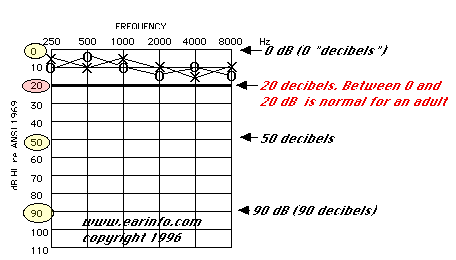

At present, there is no non-invasive test that can detect this damage that could be realistically implemented as a screening test for the military. (2016) carried out a histopathological analysis of 131 human cochleae and found that PTA was a poor predictor of specific cellular damage in the cochlea, with correlation coefficients at a maximum of 0.7 and often below 0.5. Whilst this effect has so far only been observed in animal models, the damaging effects of noise exposure that are not detected by PTA could mean that military personnel with damaged auditory systems are not being identified.Ī study by Landeggar et al. Kujawa and Liberman (2009) Kujawa and Liberman elegantly showed that damage to the cochlear nerve and afferent nerve terminals remained after total audiometric recovery following exposure to moderate noise levels (100 dB SPL for two hours). So-called ‘hidden hearing loss’ refers to hearing loss that cannot be measured by PTA. But research over the past decade has shown that damage to the auditory system can be present in individuals with audiograms within normal limits. The audiogram (PTA results) has been and continues to be the principal measure for quantifying hearing loss in most audiology clinics. It is becoming increasingly apparent that PTA alone is not sufficiently sensitive to detect damage in the auditory system. This raises two questions: 1) Is PTA sufficiently sensitive to detect damage in the auditory system? 2) Can PTA accurately predict auditory fitness for duty? “The evidence suggests that PTA is a poor predictor of inner ear damage and performance on real-world listening tasks therefore an improved method of hearing assessment is required for the UK Armed Forces.” Therefore, the detection of hearing loss in the military is dependent on the diagnostic ability of PTA. The assessment involves annual or biennial automated pure tone audiometry (PTA). The aim of this HCP is to preserve residual hearing and identify those who are not fit for duty. This article discusses whether the current methods are adequate for detecting hearing loss in military personnel.Īll serving personnel must undergo regular hearing assessment as part of the UK Armed Force’s Hearing Conservation programme (HCP). Clearly, hearing loss is a major risk for military personnel and poses a multifaceted challenge for employers.

In the veteran population, a recent Royal British Legion survey found that UK veterans under the age of 75 are 3.5 times more likely to experience hearing difficulty compared to the age-matched UK civilian population. Since 2011, hearing loss has been a principal or contributory cause for 9% of all medical discharges in the UK armed forces. It perhaps comes as no surprise then that hearing loss significantly contributes towards medical discharges in the UK Armed Forces. For example, the standard issue SA80 assault rifle has peak pressure levels in excess of 150 dB(C), and engine noise inside a tank can exceed 100 dB(A). Matt Blyth talks us through the current methods of hearing assessment and gives us an overview to the work being undertaken to improve these methods.Ī career in the military is likely to involve exposure to dangerously high noise levels.
#Hearing test army how to
A team at the University of Southampton have been funded by the Ministry of Defence to investigate how to improve the assessment of auditory fitness for duty in the UK Armed Forces.


 0 kommentar(er)
0 kommentar(er)
